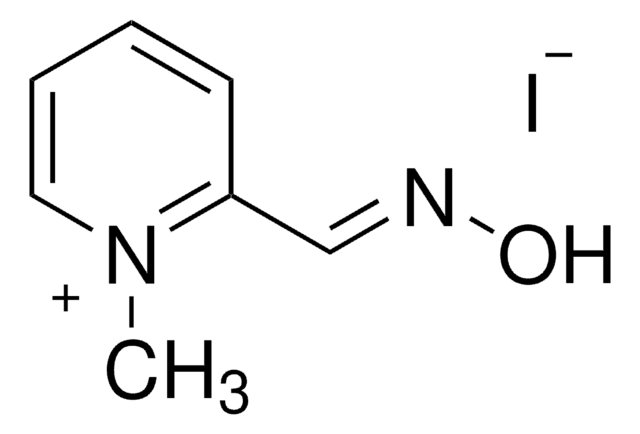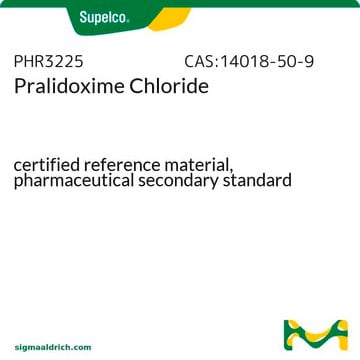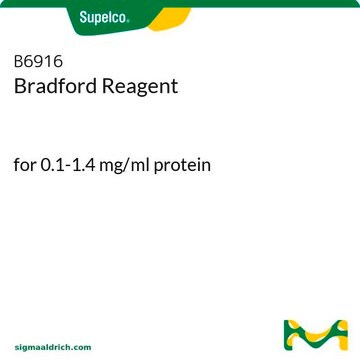P9053
Pyridine-2-aldoxime methochloride
Synonyme(s) :
2-PAM chloride, Pralidoxime chloride
About This Item
Produits recommandés
Source biologique
synthetic (organic)
Forme
solid
Pf
230 °C (lit.)
Solubilité
water: 50 mg/mL, clear, colorless to faintly yellow
Chaîne SMILES
[Cl-].C[n+]1ccccc1\C=N\O
InChI
1S/C7H8N2O.ClH/c1-9-5-3-2-4-7(9)6-8-10;/h2-6H,1H3;1H
Clé InChI
HIGSLXSBYYMVKI-UHFFFAOYSA-N
Informations sur le gène
human ... ACHE(43)
Vous recherchez des produits similaires ? Visite Guide de comparaison des produits
Actions biochimiques/physiologiques
Mention d'avertissement
Warning
Mentions de danger
Conseils de prudence
Classification des risques
Acute Tox. 4 Dermal - Acute Tox. 4 Inhalation - Acute Tox. 4 Oral
Code de la classe de stockage
11 - Combustible Solids
Classe de danger pour l'eau (WGK)
WGK 1
Équipement de protection individuelle
dust mask type N95 (US), Eyeshields, Gloves
Faites votre choix parmi les versions les plus récentes :
Déjà en possession de ce produit ?
Retrouvez la documentation relative aux produits que vous avez récemment achetés dans la Bibliothèque de documents.
Les clients ont également consulté
Active Filters
Notre équipe de scientifiques dispose d'une expérience dans tous les secteurs de la recherche, notamment en sciences de la vie, science des matériaux, synthèse chimique, chromatographie, analyse et dans de nombreux autres domaines..
Contacter notre Service technique













